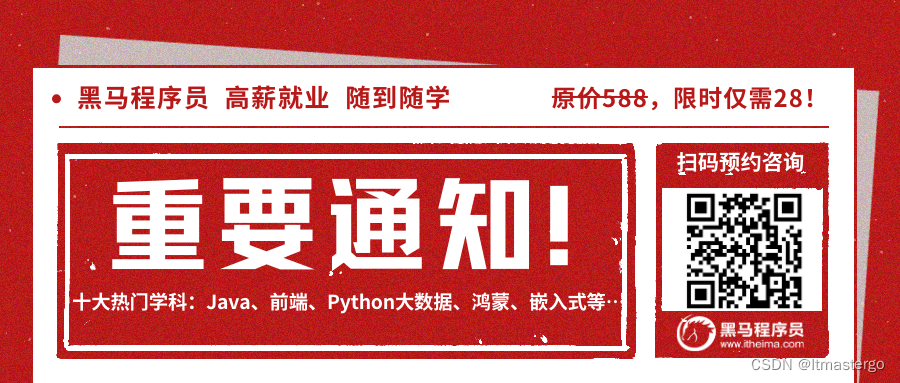REST(Representational State Transfer)是一种架构风格,它基于Web标准和HTTP协议,常用于构建网络服务。使用Java构建和消费RESTful服务需要掌握一些基本概念和技术。
一、RESTful服务的基本概念
1. REST架构风格
REST架构风格的核心原则包括:
- 资源:REST中的每一个事物都是一个资源,用URI(统一资源标识符)标识。
- 无状态:每个请求都是独立的,服务端不会保留客户端的状态。
- 统一接口:通过标准的HTTP方法(GET、POST、PUT、DELETE等)操作资源。
- 表示:资源可以有多种表示形式(JSON、XML、HTML等)。
2. HTTP方法
- GET:获取资源。
- POST:创建资源。
- PUT:更新资源。
- DELETE:删除资源。
二、构建RESTful服务
1. 环境搭建
构建RESTful服务需要以下工具:
- Java开发工具包(JDK)
- 集成开发环境(IDE):推荐使用Eclipse或IntelliJ IDEA
- Web服务器:如Tomcat或Jetty
- Maven:用于依赖管理
2. 创建Maven项目
创建一个新的Maven项目,并在pom.xml中添加必要的依赖:
<project xmlns="http://maven.apache.org/POM/4.0.0"xmlns:xsi="http://www.w3.org/2001/XMLSchema-instance"xsi:schemaLocation="http://maven.apache.org/POM/4.0.0 http://maven.apache.org/xsd/maven-4.0.0.xsd"><modelVersion>4.0.0</modelVersion><groupId>com.example</groupId><artifactId>restful-service</artifactId><version>1.0-SNAPSHOT</version><dependencies><dependency><groupId>org.springframework.boot</groupId><artifactId>spring-boot-starter-web</artifactId><version>2.5.4</version></dependency><dependency><groupId>org.springframework.boot</groupId><artifactId>spring-boot-starter-test</artifactId><version>2.5.4</version><scope>test</scope></dependency></dependencies><build><plugins><plugin><groupId>org.springframework.boot</groupId><artifactId>spring-boot-maven-plugin</artifactId></plugin></plugins></build>
</project>
3. 使用Spring Boot创建RESTful服务
Spring Boot是构建RESTful服务的流行框架,提供了简化的配置和开发体验。
1. 创建Spring Boot主类
创建一个主类,用于启动Spring Boot应用程序:
package com.example.restfulservice;import org.springframework.boot.SpringApplication;
import org.springframework.boot.autoconfigure.SpringBootApplication;@SpringBootApplication
public class RestfulServiceApplication {public static void main(String[] args) {SpringApplication.run(RestfulServiceApplication.class, args);}
}
2. 创建REST控制器
创建一个控制器类,定义RESTful API的端点:
package com.example.restfulservice.controller;import org.springframework.web.bind.annotation.*;import java.util.ArrayList;
import java.util.List;@RestController
@RequestMapping("/api/employees")
public class EmployeeController {private List<Employee> employees = new ArrayList<>();// GET请求,获取所有员工@GetMappingpublic List<Employee> getAllEmployees() {return employees;}// POST请求,创建新员工@PostMappingpublic Employee createEmployee(@RequestBody Employee employee) {employees.add(employee);return employee;}// GET请求,通过ID获取单个员工@GetMapping("/{id}")public Employee getEmployeeById(@PathVariable int id) {return employees.stream().filter(employee -> employee.getId() == id).findFirst().orElse(null);}// PUT请求,更新员工信息@PutMapping("/{id}")public Employee updateEmployee(@PathVariable int id, @RequestBody Employee updatedEmployee) {Employee employee = employees.stream().filter(e -> e.getId() == id).findFirst().orElse(null);if (employee != null) {employee.setName(updatedEmployee.getName());employee.setDepartment(updatedEmployee.getDepartment());}return employee;}// DELETE请求,删除员工@DeleteMapping("/{id}")public String deleteEmployee(@PathVariable int id) {employees.removeIf(employee -> employee.getId() == id);return "Employee removed with id " + id;}
}
3. 创建Employee实体类
package com.example.restfulservice.controller;public class Employee {private int id;private String name;private String department;// Getters and Setterspublic int getId() {return id;}public void setId(int id) {this.id = id;}public String getName() {return name;}public void setName(String name) {this.name = name;}public String getDepartment() {return department;}public void setDepartment(String department) {this.department = department;}
}
三、消费RESTful服务
消费RESTful服务有多种方法,包括使用Java标准库中的HttpURLConnection类,或者使用更高级的HTTP客户端库,如Apache HttpClient和Spring的RestTemplate。
1. 使用HttpURLConnection
以下是使用HttpURLConnection消费RESTful服务的示例:
import java.io.BufferedReader;
import java.io.InputStreamReader;
import java.net.HttpURLConnection;
import java.net.URL;public class HttpURLConnectionExample {private static final String GET_URL = "http://localhost:8080/api/employees";public static void main(String[] args) {try {URL url = new URL(GET_URL);HttpURLConnection httpURLConnection = (HttpURLConnection) url.openConnection();httpURLConnection.setRequestMethod("GET");int responseCode = httpURLConnection.getResponseCode();if (responseCode == HttpURLConnection.HTTP_OK) {BufferedReader in = new BufferedReader(new InputStreamReader(httpURLConnection.getInputStream()));String inputLine;StringBuffer response = new StringBuffer();while ((inputLine = in.readLine()) != null) {response.append(inputLine);}in.close();System.out.println("GET Response: " + response.toString());} else {System.out.println("GET request not worked");}} catch (Exception e) {e.printStackTrace();}}
}
2. 使用Apache HttpClient
使用Apache HttpClient可以简化HTTP请求的处理:
import org.apache.http.HttpEntity;
import org.apache.http.client.methods.CloseableHttpResponse;
import org.apache.http.client.methods.HttpGet;
import org.apache.http.impl.client.CloseableHttpClient;
import org.apache.http.impl.client.HttpClients;
import org.apache.http.util.EntityUtils;public class ApacheHttpClientExample {private static final String GET_URL = "http://localhost:8080/api/employees";public static void main(String[] args) {try (CloseableHttpClient httpClient = HttpClients.createDefault()) {HttpGet request = new HttpGet(GET_URL);CloseableHttpResponse response = httpClient.execute(request);HttpEntity entity = response.getEntity();if (entity != null) {String result = EntityUtils.toString(entity);System.out.println("GET Response: " + result);}} catch (Exception e) {e.printStackTrace();}}
}
3. 使用Spring RestTemplate
Spring的RestTemplate提供了更高级和便捷的方式来消费RESTful服务:
import org.springframework.web.client.RestTemplate;public class RestTemplateExample {private static final String GET_URL = "http://localhost:8080/api/employees";public static void main(String[] args) {RestTemplate restTemplate = new RestTemplate();String response = restTemplate.getForObject(GET_URL, String.class);System.out.println("GET Response: " + response);}
}
四、RESTful服务的测试
测试RESTful服务是确保其稳定性和正确性的关键步骤。可以使用JUnit和Spring Test等工具来编写测试用例。
使用Spring Test进行集成测试
以下是使用Spring Test进行集成测试的示例:
import static org.assertj.core.api.Assertions.assertThat;
import static org.springframework.test.web.servlet.request.MockMvcRequestBuilders.get;
import static org.springframework.test.web.servlet.result.MockMvcResultMatchers.status;import com.example.restfulservice.controller.EmployeeController;
import org.junit.jupiter.api.Test;
import org.springframework.beans.factory.annotation.Autowired;
import org.springframework.boot.test.autoconfigure.web.servlet.WebMvcTest;
import org.springframework.test.web.servlet.MockMvc;@WebMvcTest(EmployeeController.class)
public class EmployeeControllerTest {@Autowiredprivate MockMvc mockMvc;@Testpublic void shouldReturnAllEmployees() throws Exception {mockMvc.perform(get("/api/employees")).andExpect(status().isOk()).andExpect(result -> assertThat(result.getResponse().getContentAsString()).isNotEmpty());}
}
掌握使用Java构建和消费RESTful服务需要理解REST的基本概念,学会使用Spring Boot构建RESTful API,并能够使用HttpURLConnection、Apache HttpClient或RestTemplate等工具消费这些服务。通过实际项目和测试用例的练习,可以更好地掌握这些技能,提升开发效率和代码质量。
在学习过程中,可以参考以下资源以获取更多信息和帮助:
- Spring Boot官方文档:Spring Boot
- Spring Framework官方文档:Spring Framework
- Apache HttpClient文档:Apache HttpComponents – HttpClient Overview
- JUnit文档:https://junit.org/junit5/
通过不断实践和学习,能够更好地掌握Java RESTful服务的构建和消费,开发出高效、可靠的Web应用程序。
黑马程序员免费预约咨询









- 聚类)





——相机投影仪标定)




